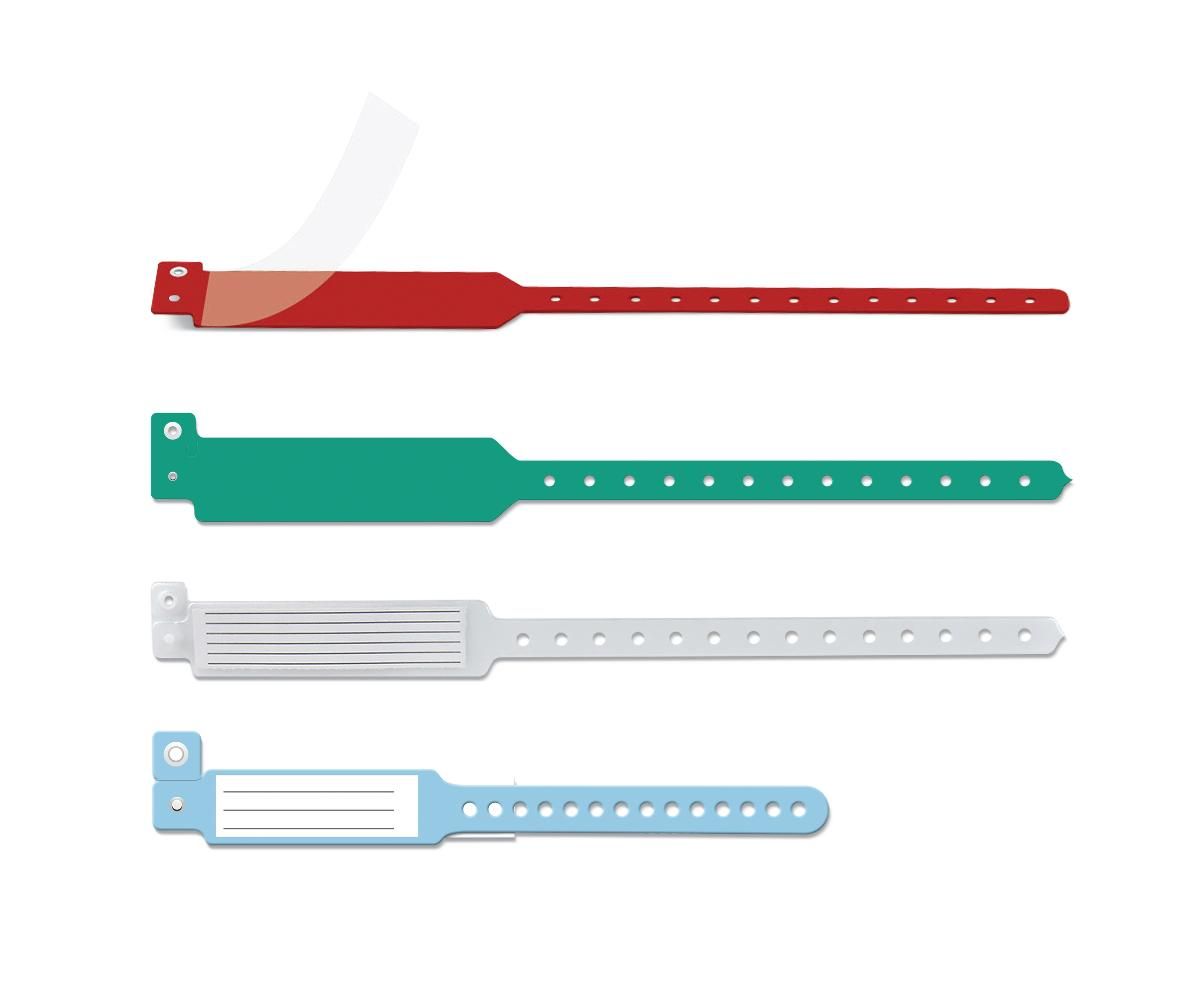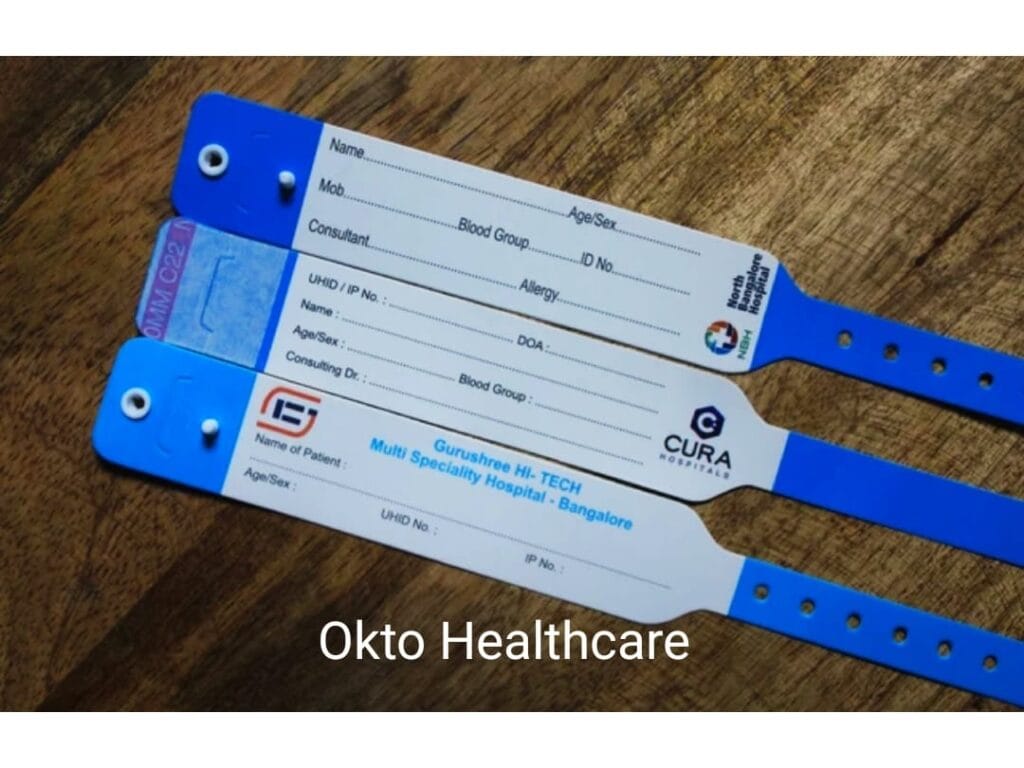Why Medical Facilities Select Patient Identification Band for Reliable Patient Tracking
Why Medical Facilities Select Patient Identification Band for Reliable Patient Tracking
Blog Article
Person Identification Bands: A Secret Tool for Improved Medical Accuracy
Client identification bands stand for a vital component in the quest of medical precision and individual safety and security within medical care atmospheres. The true degree of their impact on patient end results and total health care top quality warrants even more examination.

Value of Person Recognition
Person recognition is a vital part of healthcare that guarantees the safety and precision of medical therapy. Correct recognition procedures are important to prevent medical errors, which can result in adverse person results, including inaccurate medicine administration, misdiagnosis, or inappropriate therapy plans. The significance of accurate client identification can not be overstated, as it functions as the foundation for effective interaction amongst healthcare suppliers.
In environments where numerous patients are obtaining treatment at the same time, the threat of identity complication rises. Implementing durable identification systems aids alleviate these dangers and improves individual safety. Patient Identification Band. Precise recognition adds to the integrity of clinical records, guaranteeing that person backgrounds, allergies, and previous treatments are correctly linked to the right person.
Moreover, compliance with governing criteria and accreditation needs usually mandates stringent client recognition methods, fostering a culture of accountability and quality care. Ultimately, the relevance of person identification goes beyond mere management jobs; it is an essential aspect of supplying top notch medical care that focuses on client safety and boosts professional results. Purchasing effective identification practices is not just valuable-- it's vital in today's complicated medical care landscape.
Types of Person Identification Bands
In healthcare settings, various sorts of client recognition bands are used to make certain accurate recognition and improve safety. These bands serve as a vital device in avoiding medical errors connected to patient misidentification.
One of the most usual type is the conventional wristband, usually made from durable plastic and published with the client's name, date of birth, and an one-of-a-kind identification number. These wristbands are commonly color-coded to convey certain information, such as allergic reactions or various other clinical conditions.
An additional kind is the barcode wristband, which incorporates a scannable barcode linked to the patient's digital health and wellness record. This modern technology permits for efficient data access and verification during medication administration and other clinical procedures.
Additionally, RFID (Radio Regularity Identification) bands are becoming increasingly popular. These bands can interact wirelessly with hospital systems, permitting real-time monitoring and recognition of individuals, therefore boosting and improving operations client safety and security.

Benefits for Doctor
Making use of individual identification bands provides significant benefits for doctor, improving both operational efficiency and person safety and security. These bands act as an important tool in simplifying client administration procedures (Patient Identification Band). By making sure accurate recognition, doctor can minimize the threat of administrative errors, such as mislabeling samples or misdirecting therapies, which can result in costly hold-ups and difficulties
Moreover, client recognition bands assist in smooth communication among the health care group. With standardized and easily obtainable person details, providers can make educated decisions quickly, boosting overall operations. This efficiency is particularly vital in high-pressure settings such as emergency departments, where time-sensitive treatments are essential.
The application of recognition bands additionally supports compliance with governing standards and finest techniques, consequently lessening the threat of legal consequences stemming from identification mistakes. The use of these bands enhances data accuracy in electronic health and wellness documents, leading to far better treatment sychronisation and connection.
Influence On Person Safety
Precise patient identification is a cornerstone of health care security, dramatically reducing the likelihood of errors that can jeopardize client well-being. The usage of individual identification bands is important in guaranteeing that each individual gets the right treatment, drugs, and click here to read treatments. These bands act as a reliable reference factor for medical care specialists, decreasing the threat of misidentification, which can cause severe repercussions such as inaccurate medication administration or medical mistakes.
The application of standardized person recognition bands adds to a culture of safety within healthcare setups. By supplying clear, conveniently understandable information, these bands aid to reinforce the significance of validating view website patient identity at every stage of treatment. Moreover, they facilitate communication amongst team participants, guaranteeing that every person entailed in an individual's care understands their particular requirements and needs.
On top of that, utilizing client identification bands can improve the precision of digital health and wellness records, even more decreasing the capacity for errors - Patient Identification Band. By focusing on client safety and security via effective recognition techniques, health care carriers can promote count on and self-confidence among patients, ultimately resulting in much better scientific outcomes and improved patient satisfaction. The impact of correct patient recognition can not be overstated; it is a basic component of premium medical care shipment
Ideal Practices for Implementation
Effective implementation of individual recognition bands is important for improving patient safety and lessening mistakes in health care settings. Personnel training is necessary; all group members should recognize the importance of precise person recognition and the procedures for band application.
Second, the style of the identification bands ought to prioritize presence and longevity. Bands should be very easy to read, contain vital individual details, and hold up against daily wear. Making use of color-coding can even more enhance quick identification.


Third, integrating electronic wellness documents (EHR) with recognition band systems can enhance process. Automated signals for disparities in client identification can protect against prospective errors before they occur.
Lastly, performing regular audits and feedback sessions will certainly assist determine locations for renovation. Involving personnel in these conversations cultivates a culture of security and liability.
Conclusion
In verdict, patient identification bands play an important duty in boosting clinical accuracy and guaranteeing client security within medical care systems. Taking on ideal techniques for implementation fosters a culture of safety, inevitably Discover More leading to boosted patient end results and better trust fund in medical care solutions.
Person recognition bands stand for a critical component in the search of clinical precision and person safety and security within medical care atmospheres.Using individual identification bands provides significant advantages for medical care providers, boosting both functional effectiveness and client safety. By focusing on client safety with effective identification practices, medical care providers can promote count on and confidence among people, inevitably leading to much better medical end results and boosted individual complete satisfaction.Effective execution of client identification bands is critical for enhancing client safety and security and lessening errors in medical care settings.In verdict, individual recognition bands play an essential role in enhancing medical precision and making certain client safety within health care systems.
Report this page